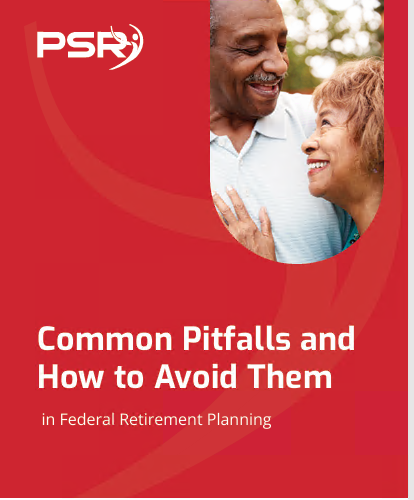Key Takeaways
-
Understanding how Social Security and your federal pension complement each other can help you maximize retirement benefits.
-
Knowing the impact of provisions like the Windfall Elimination Provision (WEP) and Government Pension Offset (GPO) is crucial to planning effectively.
Taking Charge of Your Retirement Benefits
- Also Read: FAA, Law Enforcement, and Special Federal Employee Categories—Here’s What Makes Their Retirement Unique
- Also Read: Blending Private and Public Sector Retirement Plans Is Complicated—Here’s Where Couples Get It Wrong
- Also Read: The Silent Shift in Postal Service Retirement Benefits That Could Change Everything by 2026
Social Security Basics for Federal Workers
What Social Security Covers
Social Security is a cornerstone of retirement income for millions, providing monthly benefits based on your work history. For most people, benefits are calculated on earnings covered by Social Security taxes. This program acts as a safety net, ensuring retirees, disabled individuals, and their families have financial support.
Eligibility Requirements
To qualify for Social Security, you need at least 40 credits, typically earned by working 10 years in jobs covered by Social Security. Your benefit amount is determined by your highest 35 years of earnings, adjusted for inflation. Keep in mind that gaps in your work history can lower your average earnings, and therefore, your benefit.
Key Dates and Ages
-
Eligibility Age: You can claim benefits as early as 62, but they’ll be reduced. If you’re planning an early retirement, consider how this reduction impacts your long-term income.
-
Full Retirement Age (FRA): For those born in 1960 or later, FRA is 67. Reaching this age means you’ll receive your full, unreduced benefits.
-
Delayed Benefits: Waiting past your FRA can increase your benefit by up to 8% annually until age 70. Delaying benefits is particularly advantageous if you expect to live longer or have other income sources to rely on in the meantime.
Federal Pensions: CSRS vs. FERS
Civil Service Retirement System (CSRS)
The CSRS is a legacy system for employees hired before 1984. It offers a generous pension but does not include Social Security. Instead, CSRS participants contribute to the pension fund, ensuring a steady, predictable income during retirement. However, the absence of Social Security coverage means retirees must consider alternative ways to supplement their income.
Federal Employees Retirement System (FERS)
Introduced in 1987, FERS is the standard system for federal employees. It includes three parts:
-
Basic Annuity: A defined benefit pension based on your High-3 average salary and years of service. This annuity serves as the foundation of your retirement income.
-
Social Security: Regular contributions ensure eligibility for benefits, providing additional financial security.
-
Thrift Savings Plan (TSP): A retirement savings plan similar to a 401(k), offering opportunities for tax-deferred growth and employer matching.
FERS’s three-tiered approach makes it adaptable to diverse financial needs and goals, giving employees more control over their retirement income.
How They Work Together
FERS Employees
If you’re covered under FERS, you contribute to Social Security, making you eligible for both a federal pension and Social Security benefits. Together, these provide a diversified income stream, blending guaranteed income from your pension with the flexibility of Social Security benefits. The combination allows you to balance risk and ensure a steady income during retirement.
CSRS Employees
Because CSRS does not include Social Security, you may face reduced Social Security benefits if you’ve worked other jobs covered by Social Security taxes. This reduction stems from provisions like WEP and GPO, which can significantly impact your retirement planning. Understanding how these provisions work is essential to avoid unpleasant surprises.
Tackling the Windfall Elimination Provision (WEP)
What Is WEP?
The Windfall Elimination Provision adjusts Social Security benefits for individuals receiving a pension from work not covered by Social Security, such as CSRS. The aim is to prevent retirees from receiving disproportionately high benefits from two systems.
How WEP Works
WEP modifies the formula used to calculate your Social Security benefit, potentially reducing your monthly payment. The maximum reduction in 2025 is $557, but it cannot exceed half your pension. This cap ensures that the reduction is proportional and doesn’t entirely negate your Social Security benefits.
Strategies to Mitigate WEP
-
30-Year Rule: If you have 30 years of substantial earnings under Social Security, WEP doesn’t apply. Building up enough earnings in Social Security-covered jobs can protect you from WEP’s impact.
-
Careful Planning: Consider how additional years of Social Security-covered work could reduce the impact. Every year of substantial earnings lowers the reduction applied by WEP.
Navigating the Government Pension Offset (GPO)
What Is GPO?
The Government Pension Offset affects spousal and survivor benefits under Social Security. It reduces these benefits by two-thirds of your non-covered pension. For instance, if you receive a $1,500 monthly CSRS pension, your spousal Social Security benefit could be reduced by $1,000.
Who Is Affected?
CSRS employees often feel the impact of GPO when claiming benefits based on a spouse’s work record. This provision can significantly alter the financial plans of married retirees, making it essential to understand its implications early.
Minimizing the Impact
-
Dual-Coverage Jobs: If possible, work in Social Security-covered positions to enhance eligibility and reduce the GPO’s effects.
-
Understand the Rules: Knowing how GPO applies can help you set realistic expectations and plan accordingly.
Timing Is Everything: When to Claim Benefits
Early Retirement vs. Full Retirement
Claiming Social Security at 62 reduces your benefit by up to 30%, while waiting until FRA ensures full benefits. Delaying further until 70 maximizes your monthly payments. This decision should align with your financial goals, health, and expected longevity.
Coordination with Your Pension
Federal pensions often provide steady income, allowing you to delay Social Security and reap higher benefits. Carefully balancing these streams ensures a sustainable retirement plan that meets your needs throughout your life.
Maximizing Your Thrift Savings Plan (TSP)
TSP’s Role in Retirement
As a FERS employee, your TSP contributions complement your pension and Social Security. With tax-deferred growth and employer matching, it’s a powerful tool for building wealth. Leveraging the TSP effectively can significantly boost your retirement savings.
Withdrawal Strategies
Plan TSP withdrawals to supplement your pension and Social Security. Consider:
-
Required Minimum Distributions (RMDs): Starting at age 73, you must withdraw a minimum amount annually. Failure to meet RMD requirements can result in penalties, so plan accordingly.
-
Roth vs. Traditional Accounts: Weigh the tax implications of each option to maximize after-tax income during retirement.
Healthcare Considerations in Retirement
Federal Employees Health Benefits (FEHB)
FEHB provides comprehensive coverage for federal retirees. Coordinating FEHB with Medicare can help manage costs and ensure extensive care. Retaining FEHB into retirement is a significant advantage of federal employment.
Medicare Enrollment
Most retirees enroll in Medicare at 65. Combining it with FEHB ensures coverage for a wide range of services, from hospital stays to routine check-ups. This dual coverage minimizes out-of-pocket costs while maximizing care options.
Steps to Take Now
-
Review Your Records: Verify your Social Security and federal employment records to avoid surprises.
-
Estimate Your Benefits: Use online calculators to project income from Social Security and your pension. Accurate estimates provide a clearer picture of your financial future.
-
Plan for Taxes: Understand the tax implications of your combined income streams. Federal pensions, Social Security, and TSP withdrawals all have unique tax considerations.
-
Consult an Expert: A financial advisor familiar with federal benefits can help tailor a strategy to your unique needs and goals.
Balancing Security and Comfort in Retirement
Understanding how Social Security and your federal pension fit together can make the difference between financial stress and peace of mind. By proactively planning and staying informed, you’re setting yourself up for a retirement that reflects the hard work you’ve invested throughout your career. Take the time now to educate yourself, seek advice, and make adjustments to ensure your retirement years are as comfortable and fulfilling as possible.













